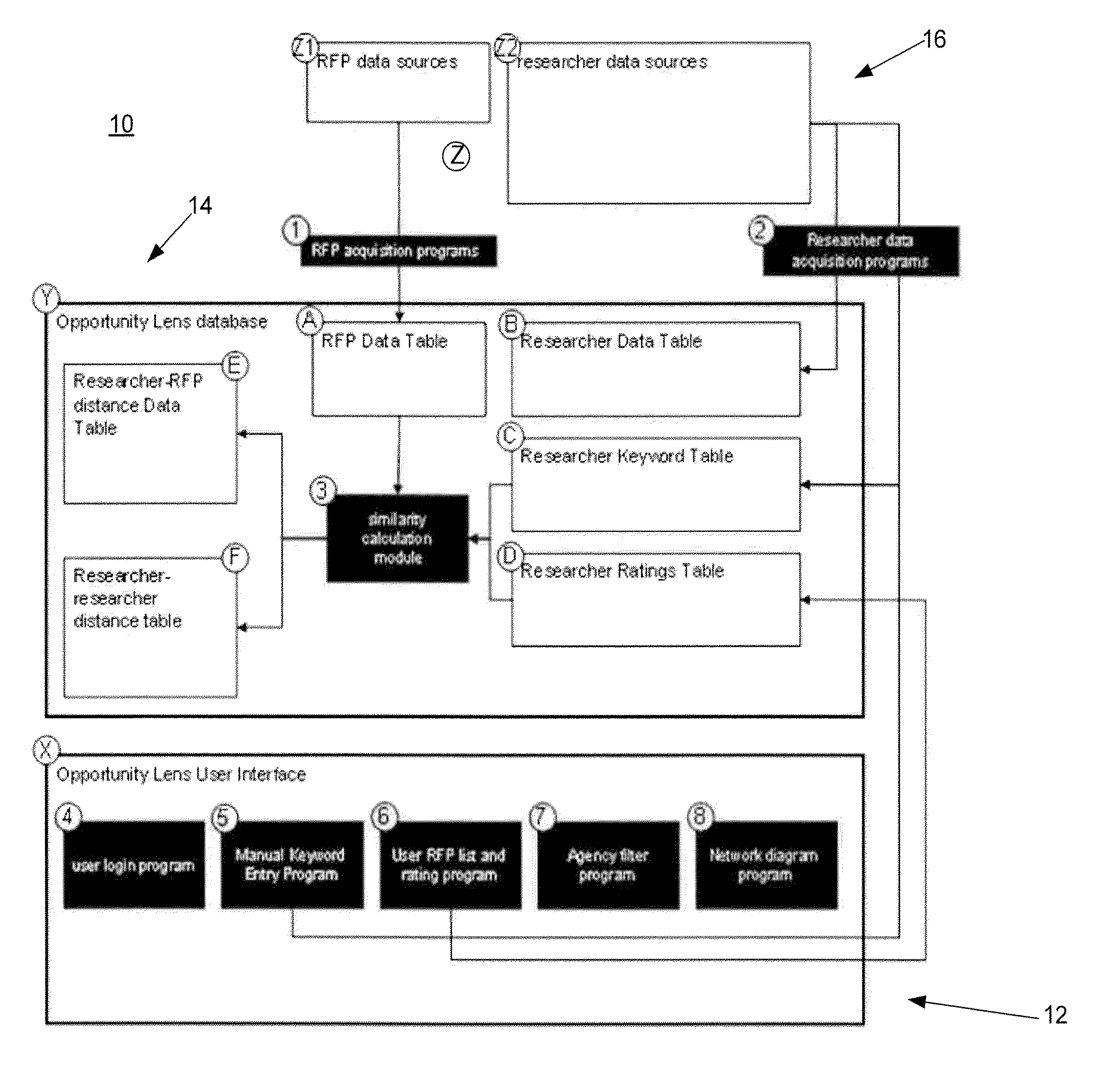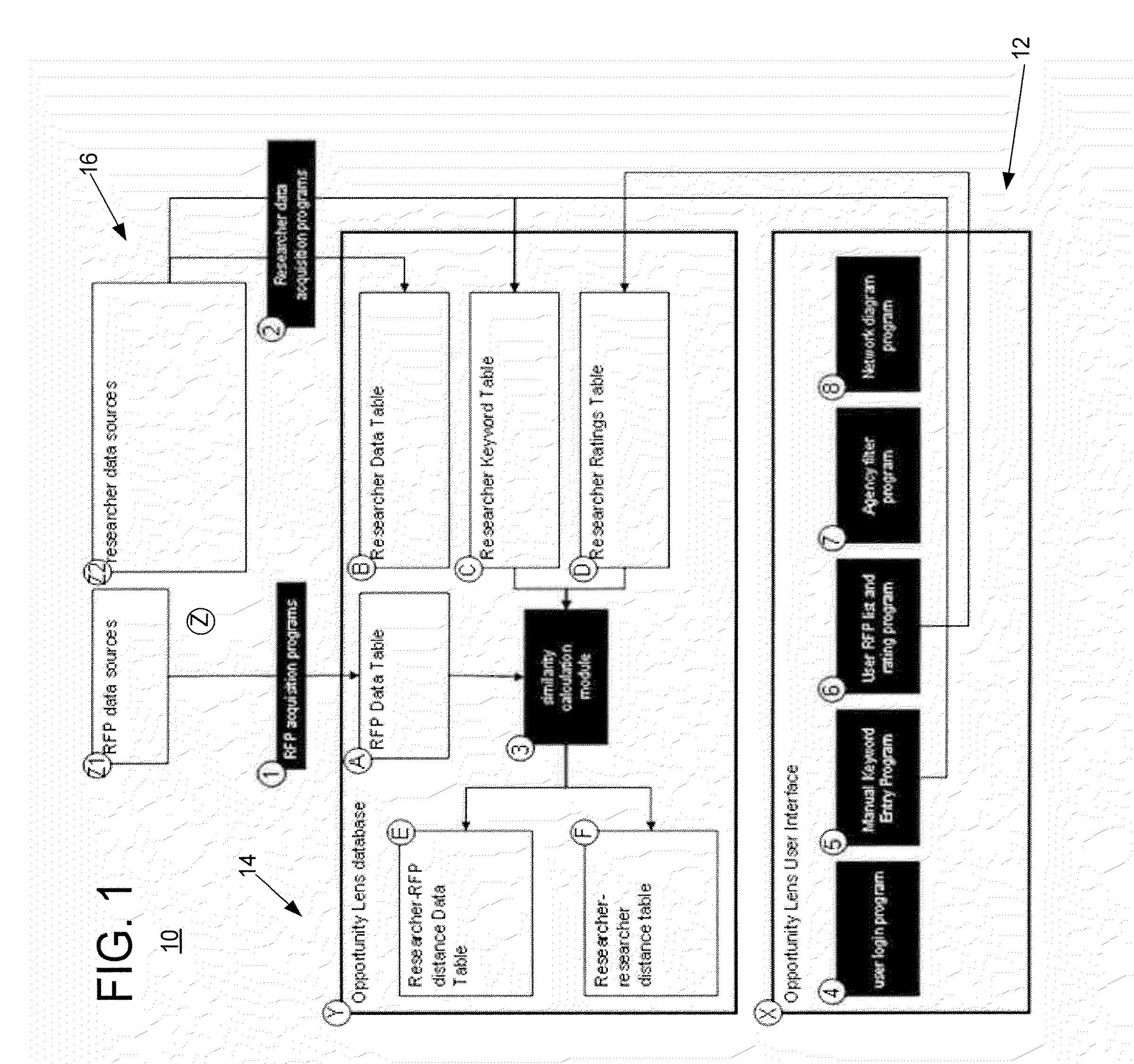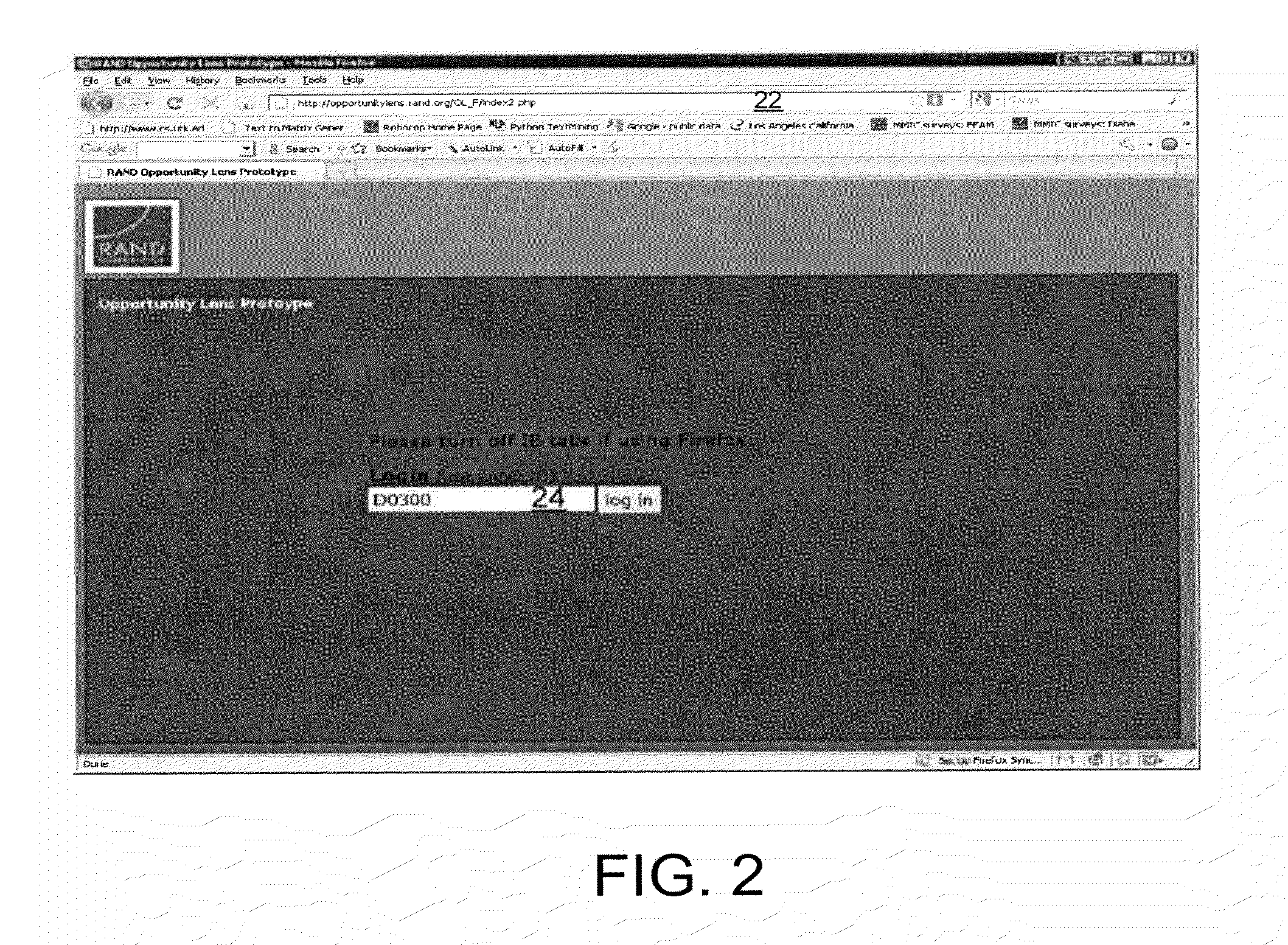Requests for proposals management systems and methods
a management system and proposal technology, applied in the field of automatic document collection and classification systems and methods, can solve the problems of missing opportunities for institutions, researcher or staff person may run out of time before he/she, etc., to improve the process of matching researchers, reduce costs, and improve results
- Summary
- Abstract
- Description
- Claims
- Application Information
AI Technical Summary
Benefits of technology
Problems solved by technology
Method used
Image
Examples
Embodiment Construction
[0025]FIG. 1 is a general overview of an RFP management system 10 according to an embodiment of the disclosure. The black boxes in FIG. 1 represent parts of the system 10. The white boxes describe the data that become part of the system 10. The system 10 includes data sources Z, a database Y, and a user interface X. The arrows in FIG. 1 illustrate information flow between key operations of the system 10.
[0026]The data sources Z include data sources, such as (but not limited to) RFP data sources Z1 and research data sources Z2. RFP data sources Z1 include websites of funding agencies, internal project descriptions, and other digital text sources signifying opportunities. These include databases such as the grants.gov archive and websites such as fedbizops.gov. This might also include descriptions of other project opportunities that are not RFPs. Researcher data sources Z2 can come from organizational databases that maintain text about interests, past proposals, publications, and othe...
PUM
 Login to View More
Login to View More Abstract
Description
Claims
Application Information
 Login to View More
Login to View More - R&D
- Intellectual Property
- Life Sciences
- Materials
- Tech Scout
- Unparalleled Data Quality
- Higher Quality Content
- 60% Fewer Hallucinations
Browse by: Latest US Patents, China's latest patents, Technical Efficacy Thesaurus, Application Domain, Technology Topic, Popular Technical Reports.
© 2025 PatSnap. All rights reserved.Legal|Privacy policy|Modern Slavery Act Transparency Statement|Sitemap|About US| Contact US: help@patsnap.com



